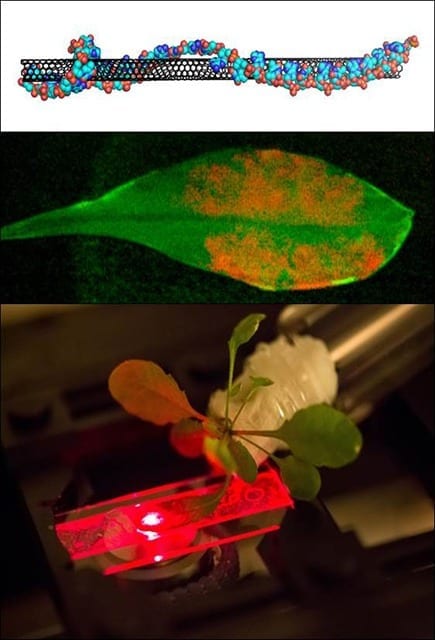
CREDIT: DARTMOUTH COLLEGE
Opening the way for new applications of smart devices, Dartmouth researchers have created the first form of real-time communication that allows screens and cameras to talk to each other without the user knowing it.
Using off-the-shelf smart devices, the new system supports an unobtrusive, flexible and lightweight communication channel between screens (of TVs, laptops, tablets, smartphones and other electronic devices) and cameras. The system, called HiLight, will enable new context-aware applications for smart devices. Such applications include smart glasses communicating with screens to realize augmented reality or acquire personalized information without affecting the content that users are currently viewing. The system also provides far-reaching implications for new security and graphics applications.
The findings will be presented May 20 at the ACM MobiSys’15, a top conference in mobile systems, applications and services. A PDF of the study, further information and demonstration videos are available at the HiLight project website.
In a world of ever-increasing smart devices, enabling screens and cameras to communicate has been attracting growing interest. The idea is simple: information is encoded into a visual frame shown on a screen, and any camera-equipped device can turn to the screen and immediately fetch the information. Operating on the visible light spectrum band, screen-camera communication is free of electromagnetic interference, offering a promising alternative for acquiring short-range information. But these efforts commonly require displaying visible coded images, which interfere with the content the screen is playing and create unpleasant viewing experiences.
The Dartmouth team studied how to enable screens and cameras to communicate without the need to show any coded images like QR code, a mobile phone readable barcode. In the HiLight system, screens display content as they normally do and the content can change as users interact with the screens. At the same time, screens transmit dynamic data instantaneously to any devices equipped with cameras behind the scene, unobtrusively, in real time.
HiLight supports communication atop any screen content, such as an image, movie, video clip, game, web page or any other application window, so that camera-equipped devices can fetch the data by turning their cameras to the screen. HiLight leverages the alpha channel, a well-known concept in computer graphics, to encode bits into the pixel translucency change. HiLight overcomes the key bottleneck of existing designs by removing the need to directly modify pixel color values. It decouples communication and screen content image layers.
Read more: Dartmouth team creates first hidden, real-time, screen-camera communication
The Latest on: Context-aware applications
[google_news title=”” keyword=”Context-aware applications” num_posts=”10″ blurb_length=”0″ show_thumb=”left”]
via Google News
The Latest on: Context-aware applications
- How RPA vendors aim to remain relevant in a world of AI agentson April 28, 2024 at 6:30 am
They’re well aware of the challenges — and believe that generative ... metadata from more than 150 million automation processes across thousands of enterprise applications,” Peter White, SVP of ...
- Navigating The Shift: The New Era Of Conversational Marketingon April 28, 2024 at 4:00 am
AI chatbots redefine customer engagement. Leaders Devlin, Schaffer, Deitz advise on precision, ROI, focus. Explore digital interaction's future for tech-savvy consumers.
- 6 reasons why I'd buy a Chromebook instead of a Windows laptopon April 27, 2024 at 5:00 pm
Sure, price and durablity are leading reasons, but the other is that they are perfectly suited for these applications through their software ... around thanks to its responsiveness and context ...
- USCIS Announces Open Application Period for the Citizenship and Integration Grant Programon April 25, 2024 at 3:57 pm
U.S. Citizenship and Immigration Services today announced the application period for the Citizenship and Integration Grant Program, which provides funding for citizenship preparation programs in ...
- Blockchain + AI , Former OpenAI Member Ishant Singh was Appointed as BitYuan Blockchain CEOon April 25, 2024 at 10:17 am
On April 12th, BitYuan Blockchain announced via its official Twitter account @Bityuanofficial that it has invited former OpenAI member Ishant Singh to join as CEO, responsible for promoting the ...
- DeepMind researchers discover impressive learning capabilities in long-context LLMson April 24, 2024 at 7:46 pm
In their study, the DeepMind researchers investigated how many-shot ICL affects the performance of LLMs in downstream tasks.
- Revolutionizing Connectivity: Context-Rich System Market Surges to a Projected $6.35 Billion by 2033on April 24, 2024 at 5:12 am
Context Rich Systems Market is estimated to hit worth US$ 6.3 Billion at CAGR of 17.3% from forecast period 2023 to 2033 | Data by Future Market Insights, Inc.
- How application security can create velocity at enterprise scaleon April 22, 2024 at 1:33 pm
Put simply, a security program run from a single source of truth is possible when your security program makes business decisions based on metrics that truly matter and has data from disparate tools ...
- Advancing high-resolution ultrasound imaging with deep learningon April 22, 2024 at 11:38 am
Researchers at the Beckman Institute for Advanced Science and Technology have developed a new technique to make ultrasound localization microscopy, an emerging diagnostic tool used for high-resolution ...
- How ADR – application detection and response – can become the ‘EDR for apps’on April 19, 2024 at 4:01 am
Verizon’s DBIR found that about 80% of cyberattacks now target applications, emphasizing an urgent need to reflect on the way we approach application security (AppSec). This evolution of development ...
via Bing News











